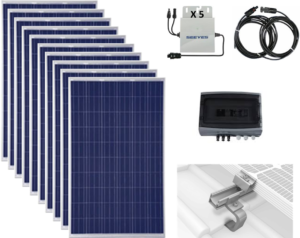Les États-Unis pourraient afficher un potentiel de flexibilité résidentielle de 88 gigawatts (GW) d’ici 2023, avec près de 30 millions d’équipements de production décentralisée et connectés au réseau déjà installés dans tout le pays.

Quelles sont les tendances du marché aux Etats Unis
The concept of revamping and repowering is one of the newest terms in the solar industry, and is definitely one to watch. Indeed, as the installed base of PV systems ages, upgrading and improving operating plants becomes increasingly relevant to both manufacturers and PV plant asset managers. According to IHS Markit’s ‘PV Installation Tracker’, more than 40 GW of PV systems in Europe above 100 kW are more than five years old, and could be subject to component changes in the coming year, including repairs, replacement, revamping, and repowering. Revamping opportunities are not only related to defunct components, but also to the number of module and inverter companies that have exited the market in recent years. Added to this is the dramatic decline of component costs in the last few years – and the equally impressive improvements in components’ technology, quality and performance – which has also stimulated growth in revamping. However, while interventions create opportunities to increase the performance of the existing PV generation fleet, each one must be analyzed on a plant-by-plant basis and must also consider the policy and technical aspects.
- Large-scale, big business
As of the start of 2018, 420 MW of battery storage coupled with utility-scale solar had been installed globally, said IHS Markit. It added that 40% of the total energy storage pipeline is comprised of solar-plus-storage projects, while it expects between 20 and 26 GWh of energy storage co-located with utility-scale solar to be deployed between 2018 and 2025. There are clear growth opportunities in the United States, Japan, South Korea, the United Kingdom and France, it added. With this growth, IHS’ Julian Jansen explained how new value is emerging for storage on the utility side of the meter, primarily from capacity requirements and the integration of utility-scale solar and island microgrids. This leads to greater growth in the longer duration energy storage segment, especially systems of two to four hours (and above) in duration, he said. In theory, energy storage can provide multiple use cases when paired with utility-scale solar: Time shifting generation; ramping; and distribution network support. In the growing world of datacenters, strong business cases are also emerging for solar and storage. This trend is definitely one which will continue to grow.








